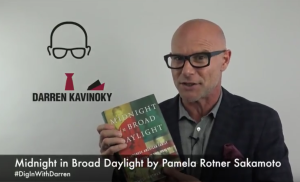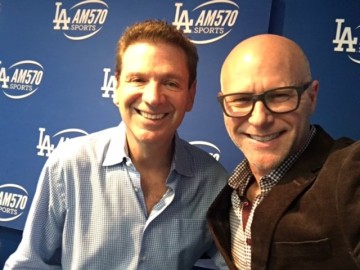
Hawaii Sunset photo by Darren Kavinoky
As beautiful as the Hawaiian sunset is in this photo, there was a time when Hawaii was the site of catastrophic grief for the United States. On December 7, 1941, during the Presidency of Franklin D. Roosevelt, the Japanese attacked the Hawaiian Island of Oahu at Pearl Harbor.
The Pearl Harbor Attack brought the United States face to face with mass casualties of war on our homeland. “Most of the damage to the battleships was inflicted in the first 30 minutes of the assault. The Arizona was completely destroyed and the Oklahoma capsized. The California, Nevada, and West Virginia sank in shallow water. Three other battleships, three cruisers, three destroyers, and other vessels were also damaged. More than 180 aircraft were destroyed. U.S. military casualties totaled more than 3,400, including more than 2,300 killed. The Japanese lost from 29 to 60 planes, five midget submarines, perhaps one or two fleet submarines, and fewer than 100 men.” [https://www.britannica.com/event/Pearl-Harbor-attack].
The sentiment in America was an understandable anger towards the Japanese over the attack which corralled a high level of patriotism in the midst of a devastating economic depression.
Only a few years earlier, “in 1938, the sputtering recovery and visionary New Deal faltered. That year more than four million lost their jobs, and the stock market slumped.” [Page 95. Midnight in Broad Daylight. Pamela Rotner Sakamoto.]
My father and my grandparents lived through The Great Depression and they recounted tales to me of having to wait in bread lines, growing produce in their backyards to share with neighbors, and taking in boarders to make the rent.
The Pearl Harbor attack in 1941 inspired a tired nation to wake up and fight back. The effort to defend the country drew millions of young American men to sign up and fight for the country’s freedom.
This book hits home for me because my own father, not quite 18 at the time, was one of those very young American men who signed up willingly to defend his country. He was a first generation U.S. citizen born to parents that had immigrated to America from Yugoslavia. His love of country was fierce. My father joined the United States Navy eager to defend his country. He never forgot being seated on the train and seeing his own father standing alone on the platform crying, as he went off to war and the train pulled away from the station.
“Midnight in Broad Daylight” recants the story of one Japanese immigrant family and their experience with the prejudiced discrimination in the United States both before the attack and after. The book takes an honest look at prejudice and discrimination, the divide between immigrant generations. Many of the experiences recanted in “Midnight in Broad Daylight” are similar to those my own father had as a 1st generation citizen. I remember him telling stories about how he would scold his mother for speaking Croatian in public, telling her to speak English so as not to embarrass him.

USS Alabama photo by Darren Kavinoky, taken July 2016
The day after the attack, on December 8, 1941, President Roosevelt addressed the Congress of the United States. In his speech he argued, “We’re confident in our armed forces with the unbounding determination of our people we will gain the inevitable triumph. So help us G*d. I ask that the Congress declare that since the unprovoked and dastardly attack by Japan on Sunday December 7 1941 a State of War has existed between the United States and the Japanese Empire.
“On December 7th, 1941, a date which will live in infamy, hundreds of Japanese planes attacked Pearl Harbor and the Island of Oahu, Hawaii. The devastating surprise attack killed 2,403 and wounded over 1,000. It marked USA’s entrance into WWII. While the ships were still burning, patriots from across our country enlisted to fight back. Eventually, Japan surrendered on the deck of the USS Missouri, ending WWII.” [Retrieved via https://pearlharboroahu.com/]
Both Japanese immigrants who had fled their country for a better life in America and their natural born children that were legal citizens of the United States, were feared by the United States post Pearl Harbor. The nation, fearful that traitors were living among them, took action in 1942 to force thousands of Japanese Americans into detention internment camps removing them from their farms and homes with “one pack” to lived behind barbed wire.
MORE ON MIDNIGHT IN BROAD DAYLIGHT
The July 2016 Darren Kavinoky Book Club selection, Midnight in Broad Daylight: A Japanese American Family Caught Between Two Worlds, by Pamela Rotner Sakamoto, is a compelling story that discusses the racism, anti-Japanese sentiment even before the attack, immigration issues, and difficulties that a 1st generation born in the U.S. to parents who are foreign citizens. It delves deeply in to World War ll and a Japanese American family split between two sides.
Moreover, the book is an in depth look at how people can turn on one another based on the color of their skin. It is an important recount of a time in United States history which has the power to repeat itself if the lessons learned are not remembered in this post 9/11 world.
 Midnight in Broad Daylight: A Japanese American Family Caught Between Two Worlds by Pamela Rotner Sakamoto
Midnight in Broad Daylight: A Japanese American Family Caught Between Two Worlds by Pamela Rotner Sakamoto
Are you reading Midnight in Broad Daylight with the #DKBookClub? Please share your thoughts with hashtag #DigInWithDarren.

- #JourneyAcrossAmerica Update - May 10, 2017
- CNN Interview for my #RunAcrossAmerica - April 21, 2017
- #WhatsMyWin Training and Interview for my #RunAcrossAmerica - April 21, 2017





 Darren is an accomplished TV personality, attorney, interventionist, keynote speaker, and 'misbehavior expert' who appears constantly on countless TV and radio shows.
Darren is an accomplished TV personality, attorney, interventionist, keynote speaker, and 'misbehavior expert' who appears constantly on countless TV and radio shows.